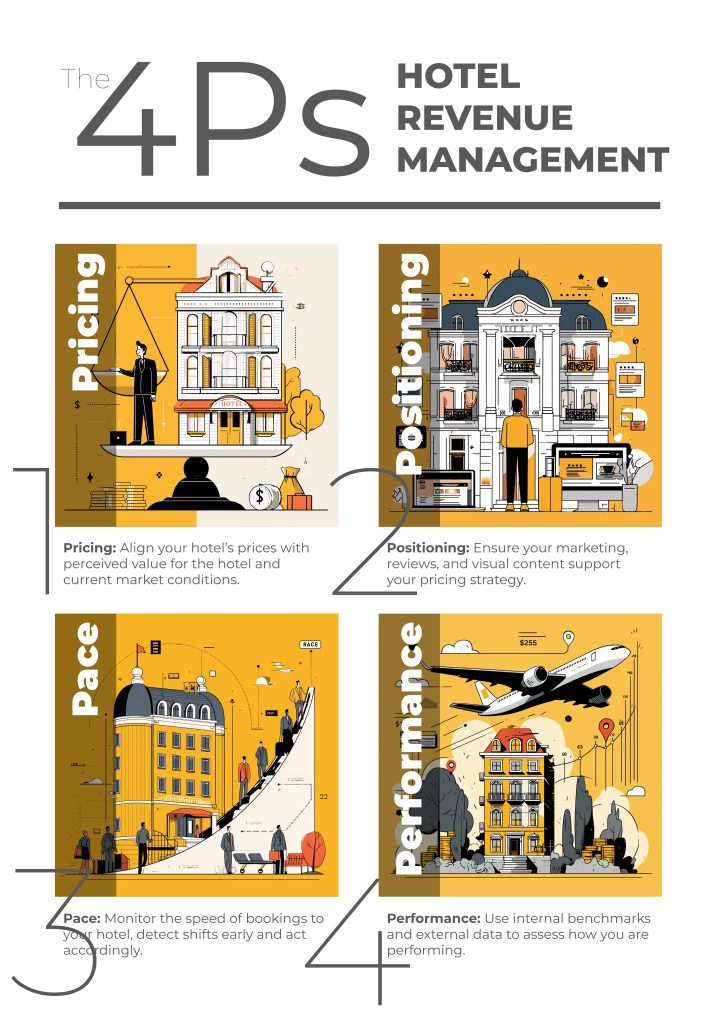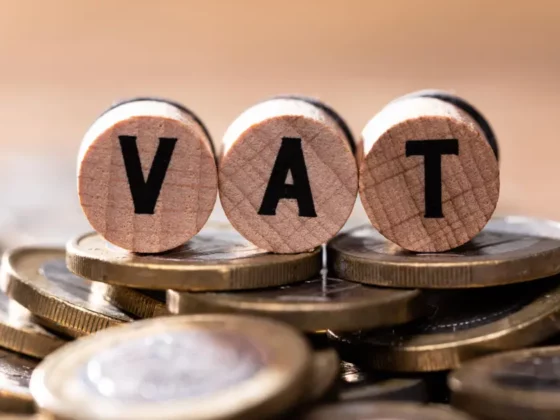By Hrishikesh Bapat, Head of Product at LodgIQ
Have you ever wondered why so many hoteliers struggle to maximize their revenue despite putting in a lot of effort? As a revenue management expert, I often see properties focusing on minor tweaks without having a clear strategic framework. Today, I want to share with you a proven method to significantly boost your profitability and bookings: the 4Ps of Revenue Management.
Download the Modern Revenue Management Guide.
Understanding the 4Ps of Revenue Management
Pricing, Positioning, Pace, and Performance are what we call the 4Ps and form the foundation of a successful hotel revenue management strategy. Pricing is your rate strategy, Positioning is how your brand is perceived, Pace measures how fast bookings are coming in, and Performance is the concrete result of your efforts. These four elements are interconnected in a continuous loop; a change in one affects the others.

Pricing: The Foundation of Your Commercial Strategy
Pricing is central to your commercial success and brand positioning. I once advised a hotel that had priced itself too high for its segment. By realigning the rates to better reflect market expectations and guest perception, the property quickly saw a noticeable uptick in bookings. Setting the right rate means finding a price that aligns with your market and product perceived value.
A well-timed pricing strategy boosts customer value perception and strengthens your brand. This stronger brand presence gives you more pricing power, allowing you to stabilize, reposition, and assert your brand within the market. If you’re already a rate leader, maintaining consistent pricing with your positioning reinforces your value moat as it leads to positive reviews, higher NPS, and lower CAC.
Positioning: Your Brand Image as a Key Driver
Positioning is what guests believe about your hotel before they even book. A strong positioning helps justify your pricing and naturally attracts more demand. Keep a close eye on guest reviews, especially on TripAdvisor and OTAs, and address as many reviews as possible, even those posted a few months ago.
I’ve seen properties suffer significant booking declines simply because of unmanaged negative reviews. Even with the right pricing, if your positioning is off, bookings will drop. Positioning is about focusing on your guest experience, volume of reviews and online presence. You should then plan meaningful touchpoints so as to engage with guests well before they arrive.
Pace: The Rhythm That Reveals Success or Trouble
Pace is the rate at which you accumulate bookings for future dates. It provides a real-time view of whether your pricing and positioning are working. A slowdown in pace is often the first sign that something needs attention.
To analyze your pace effectively, you should compare current booking trends not only to historical data but to market movement as well (e.g., post Covid, historical pacing data were irrelevant). Review your pace every day, if something looks off, ask yourself: Are my prices aligned with demand? Is my positioning appealing? To answer these questions, you should examine your segmentation. Segmentation analysis will help you identify any demand shifts. You can then investigate your pricing and visibility to make sure you stay aligned with changing demand patterns.
Performance: The Tangible Outcome of Your Strategy
Performance is the result of how well you execute on Pricing, Positioning, and Pace which are the “Three Ps” that drive commercial strategy in hospitality. Performance is therefore the tangible outcome of your strategy, and should be assessed objectively using both internal benchmarks (like budget goals, forecast accuracy, or year-on-year growth) and external references (market comps, competitive set indices, and broader industry trends).
To truly understand and monitor your execution, focus on these key metrics:
- Occupancy Rate: Measures how well you are filling your available inventory.
- RevPAR (Revenue per Available Room): Captures your ability to generate revenue per room regardless of occupancy level.
- Customer Acquisition Cost (CAC): Tracks your efficiency in acquiring demand and how cost-effective your marketing and distribution strategies are.
When performance data is continuously looped back into decision-making, it allows for better segmentation, smarter demand forecasting, more surgical rate setting, and informed resource allocation across channels and audiences.
Performance as a Control Layer
While Positioning, Pricing, and Pace represent the proactive levers of strategy, Performance acts as the control layer. It validates decisions and course-corrects execution.
A disciplined approach—where you actively manage the Three Ps and regularly review the Fourth—enables your team to create a virtuous cycle:
- Refined positioning improves perceived value.
- Strategic pricing boosts yield while staying competitive.
- Well-paced distribution smooths demand curves and drives early conversion.
- Regular performance reviews then reveal what’s working and where to double down or adjust.
This cycle not only maximizes operational efficiency but also compounds value, not only for the guest through a better-tailored experience, but for ownership as well through improved profitability and asset appreciation.
In today’s dynamic and data-rich hospitality environment, performance is not a passive outcome, it is an asset to be harnessed. A hotel that combines strategic execution of Positioning, Pricing, and Pace, and reviews Performance with rigor can enter a state of continuous improvement and value creation.
I believe this is the foundation for sustainable growth, deeper guest loyalty, and stronger returns for owners.
Bringing the 4Ps into Your Daily Operations
How can you put this virtuous circle into action right away? Here’s a simple checklist to help you implement the 4Ps in your daily hotel management:
- Monitor your Pace daily. If something looks off, investigate immediately.
- Review your Positioning monthly through guest reviews and OTA visibility.
- Adjust your Pricing regularly based on demand signals and competitor behavior.
- Measure your Performance monthly using your three key metrics.
In my experience, the best results come from a proactive mindset and a structured, strategic approach. The best time to optimize your revenue? It’s right now.
For Additional Insights, download the Modern Revenue Management Guide.
Stay Informed with LodgIQ:
Subscribe to our newsletter for the latest insights and strategies from our team of revenue management experts. Visit https://lodgiq.com/ and stay ahead in the hospitality industry.









